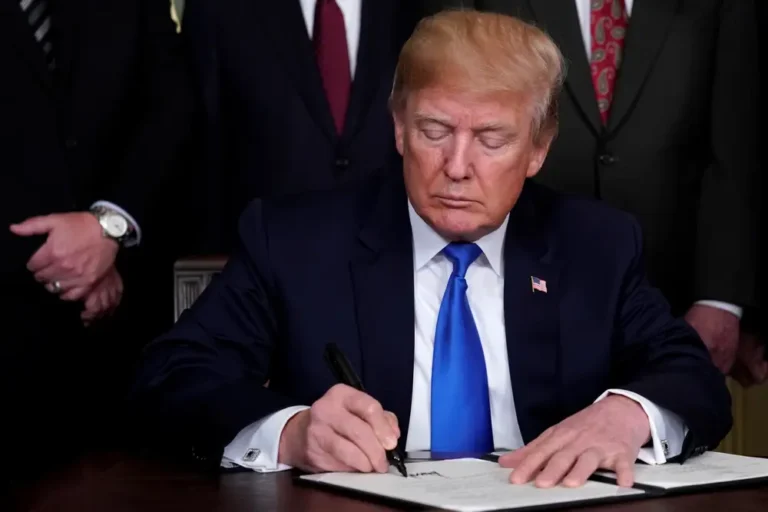Best investments ever: 7 Wall Street heavyweights reveal the single best trades of their careers

No legendary investing career on Wall Street is made by accident — it’s the sum of many intelligent decisions that compound over time.
It’s not just about luck or pivotal decisions. Consider Michael Burry, who could have been just another investor if he hadn’t anticipated or capitalized on the subprime mortgage crisis. And Warren Buffett, who attributes Berkshire Hathaway’s triumph to ‘about a dozen truly good decisions,’ such as his initial investments in Coca-Cola and American Express.
We asked seven pro investors to identify the best trades of their careers and explain how the lessons from those decisions still apply today.
1. Rob Arnott, founder of Research Affiliates

Rob Arnott, founder of Research Affiliates
When the September 11, 2001 terrorist attacks unfolded, investors were shaken, and the S&P 500 fell more than 7% when the market reopened on September 17. The CBOE Volatility Index, also known as the VIX, shot above 40, essentially meaning traders were betting that the stock market would be exceptionally rocky over the following month.
However, investing legend Rob Arnott was confident that the market would stabilize and the volatility index would come back down. So he shorted the index, standing to profit if it fell.
The index continued to climb briefly, however, and his brokerage issued a margin call. This meant he had to either inject money into his brokerage account or sell some of his assets so that he could continue to invest with borrowed money. But instead of panicking, he strategized. He decided to lean into his bet and add money to his account, increasing his short position on the VIX.
Soon after, the index fell rapidly, dropping all the way from the mid-40s to the low 20s by the end of 2001, helping to put Arnott back into the green. His strategic decision paid off, proving that even in the face of adversity, success is possible.
“I lost about a third of my liquid net worth in that week,” Arnott said. “Don’t get me wrong, I wasn’t licking my wounds about that; I’d lost friends. And so, having lost money was totally secondary. But I had margin calls, and so what did I do? I ramped up my investment, not down, and made the loss back twice over the next six weeks.
“I felt that absent Armageddon was way too high,” he said of the index’s surge.
2. Bob Elliott, founder of Unlimited Funds

Bob Elliott
Bob Elliott’s best investment ever isn’t exactly the type of sexy trade you might expect from a former executive at Bridgewater Associates, the largest hedge fund in the world.
That is unless Treasury Inflation-Protected Securities get you going.
During the 2008 Global Financial Crisis, yields on 30-year TIPS briefly went above 3% as investors sold the assets off to raise cash as the economy tanked. Because TIPS offer real yields, meaning returns are in excess of inflation levels, yields this high on the long end are hard to come by, Elliott said.
So when he saw the attractive, risk-free returns available over such a long period, he scooped some up.
“They’re a smaller market with less liquidity, particularly back then,” Elliott said. “When various folks didn’t have the balance sheet to hold securities during the financial crisis, they sold TIPS, which created an elevation in the real yield. So it was basically a liquidity squeeze.”
He added: “Greater than 3% real returns, risk-free, are about the risk-return that you’re going to ever get in the market.”
Years later, when real yields went negative, he sold them off for a profit.
3. Jeff Muhlenkamp, lead portfolio manager at Muhlenkamp & Company

Jeff Muhlenkamp
Jeff Muhlenkamp’s namesake Muhlenkamp Fund (MUHLX) has been in the top 3% of its category in the past half-decade, thanks to trades like one he pulled off on Chinese internet firm Baidu (BIDU).
The search giant caught Muhlenkamp’s eye in December 2020, mainly due to its relatively cheap valuation of around 10x earnings and a 3% to 4% dividend yield. Unlike its US-based counterparts or Chinese rival Alibaba, it was trading a little above pre-pandemic levels.
“When we bought it, it had sold off,” Muhlenkamp said. “I kind of viewed it as one of the big Chinese tech companies, kind of analogous to Google, but a little different too.”
Muhlenkamp bet on Baidu, hoping it would eventually become a steady, long-term grower.
“What was attractive was just the low expectations people had for a very cash-generative company,” Muhlenkamp said.
To Muhlenkamp’s surprise, Baidu shares took off shortly after the company announced autonomous vehicle testing. Growth fund managers took note, and the stock rocketed higher. Muhlenkamp cashed out after about three months and booked a 93% gain.
“I pretty much expected, ‘OK, if I get a double out of this in five years, I’ll be happy’ — that’s pretty decent money,” Muhlenkamp said. “The market handed me that double in three months.”
Muhlenkamp’s Baidu investment serves as a critical lesson for investors: It’s possible to be right about a stock but for the wrong reasons — or vice versa if there’s an unexpected event.
“You come up with a thesis, and you try to figure out the odds that this favorable outcome, or this unfavorable outcome, or whatever outcome you think is going to happen, is going to happen,” Muhlenkamp said. “And maybe you say, ‘OK, I think it’s 70% likely that this favorable outcome occurs.’ If the unfavorable outcome occurs, you’ve got to scratch your head and say, ‘OK, was I wrong about the odds? Or did simply the 30% show up instead of the 70%?'”
Overconfidence is critical for investors to overcome — especially when it’s so tempting to brag about wins.
“That’s the challenge, really, in creating a system for how you invest and evaluate your results,” Muhlenkamp said. “It may be that you had a very good assessment, and it was very likely to turn out positive, but again, never certain — and that random unfortunate end is what ended up happening. You kind of did it all right, but it still didn’t turn out well. That’s entirely possible.”
4. Sona Menon, head of the North American pension practice at Cambridge Associates

Sona Menon
Sona Menon, the head of the North American pension practice and an outsourced chief investment officer at Cambridge Associates, oversees various institutional client portfolios, including pensions, endowments, foundations, and healthcare institutions. Her investing approach requires maneuvering through all market conditions to enable investments to last generations. In a bifurcated market where the direction of the economy remains somewhat uncertain and portfolio managers are split in their preferences and style, her top investment decision has been adding a systemic and data-driven approach.
“The market environment over the last several years has been one of meaningful style dispersion between value and growth equity investing. During this period of time, my investments with talented quantitative managers have been an important area of success within my portfolios. These quant, model-driven strategies have provided strong and steady outperformance in a highly risk-managed way. They pair especially well with more fundamental stock pickers, whose styles may have been in and out of favor in recent years.”
5. Bryant VanCronkhite, senior portfolio manager and cohead of the special global equity team at Allspring

Bryant VanCronkhite
Bryant VanCronkhite is a senior portfolio manager and cohead of the special global equity team at Allspring. His best investment decision was a strategic one that spanned most of his career: to remain underweighted in banks and overweight in industrials, specifically within the small- and mid-cap portfolios he oversees. This is because both sectors are beneficiaries of a solid economic backdrop but have very different fundamental underpinnings, with banks being disadvantaged.
To keep his macro exposure balanced while optimizing for stock selection, he skipped the small-to-midsize banks because they have less competitive advantages and less control over how they use their capital, limiting their ability to create unique value for their shareholders.
“I view banks as commodity businesses with limited control of their own destiny. The macro exposure of banks can be replicated within industrials,” VanCronkhite said. “But within industrials, you can find competitively advantaged businesses with tremendous control of their own destiny.”
He noted that industrials within the Russell Mid Cap value index had returned 116% over the previous five years, while banks within that index were only up by 20% for the same period. A similar performance can be observed within the small-cap benchmark, the Russell 2000 Value, where industrials returned 100% versus banks at 19% over the previous five years.
“Clearly, the choice has paid off,” VanCronkhite said. “Furthermore, over the three and five-year period, our stock selection method has allowed our stocks to outperform those of the benchmark in both the bank industry and industrial sector across both our Allspring Special Small Cap Value and Allspring Special Mid Cap Value portfolios.”
6. James Davolos, portfolio manager at Horizon Kinetics

James Davolos
Leading fund manager James Davolos has learned investors don’t always mean what they say.
“Everybody claims that they look for a temporary or fixable issue in a business and [are] looking for a steep discount as a result of that,” Davolos said.
However, when such fire sales occur, many market participants run in the other direction. Davolos, who has helped guide the Kinetics Small Capital Opportunities Fund (KSCOX) to a top-7% showing in the last 15 years, said his best trade came when he charged toward chaos.
The year was 2014, during the height of the Ebola outbreak in West Africa. There was fear — which turned out to be six years premature — that the virus would spread across the world.
But Davolos had his doubts. He noted that case counts in New York City weren’t climbing, even after reports that a physician involved with Doctors Without Borders who had been in Guinea and fell ill with the virus had enjoyed a night out on the town.
That didn’t stop shares of the French logistics conglomerate Bollore from getting pummeled.
“One of their biggest businesses back then was port logistics and shipping assets in West Africa, and so the stock plummeted on all of this Ebola news where the ports were closed and all of that,” Davolos said. “And it was not any wild insight, but typically these things are contained and there’ve been plenty of these outbreaks over the years.”
Davolos said he was met with some skepticism when he pitched the idea, though his colleagues soon agreed that the threat would pass. In time, it did, and the stock soon bounced off its lows.
“It was a name that we knew well, and I saw what was happening,” Davolos said. “And, looking at market dislocations, that one seemed just to be too easy to pass up.”
Just like Davolos was skeptical of the market’s narrative about Ebola, investors should carefully examine prevailing sentiment to ensure that it aligns with data. Otherwise, it’s easy to fall victim to groupthink. And, as World War II General George Patton is quoted as saying: “If everybody is thinking alike, then somebody isn’t thinking.”
7. Harley Bassman, managing partner at Simplify Asset Management

Harley Bassman
Convexity — an advanced financial concept reflected in the relationship between bond prices and yields that many investors don’t bother understanding — has become the backbone of Harley Bassman’s four-decade-long career in markets.
“If you have an asset or anything that, for an equal coin flip, you could make a dollar or lose a dollar — that’s zero convexity,” Bassman said. “If you could make two, lose one — positive convexity. Lose three, make two — negative convexity. Now, the game is then deciding how to price each of those assets or bets — whatever you want to call it — to make it all fair.”
After stops at Merrill Lynch, Credit Suisse, and PIMCO, Bassman now manages ETFs for Simplify Asset Management, including the top-performing Simplify Interest Rate Hedge ETF (PFIX), which is a hedge against higher-for-longer interest rates.
The self-described “Convexity Maven” has a far different investing process than the typical investor, as his convexity-focused commentary illustrates. Bassman pounces on market inefficiencies by staying patient and taking advantage of the time value of money, and differences in option prices.
Bassman’s top trades came after he saw gaps between the present and future values of assets, including the US dollar relative to the Japanese yen and listed-futures prices of dividends for the Deka-Nachhaltigkeit Aktien Europa. He did this by identifying mispriced long-term future options due to an abnormal relationship between the borrow and coupon rates.
“It’s a little complicated, but there’s a relationship between these three things, and they get out of whack,” Bassman said.
Rock-bottom interest rates made those trades possible, Bassman said, though they may not return anytime soon since inflation remains persistent.
However, Bassman said he still sees opportunities in long-term oil futures. American crude oil contracts for December 2028 are trading for under $65, which is well below today’s prices of close to $80. And, unlike many in markets, Bassman is bullish about oil in the long term.
“I’m not going to try to pick the bottom,” Bassman said. “I’ll just say, you know what? I think oil is going to be at least this price in five years, and maybe higher.”





